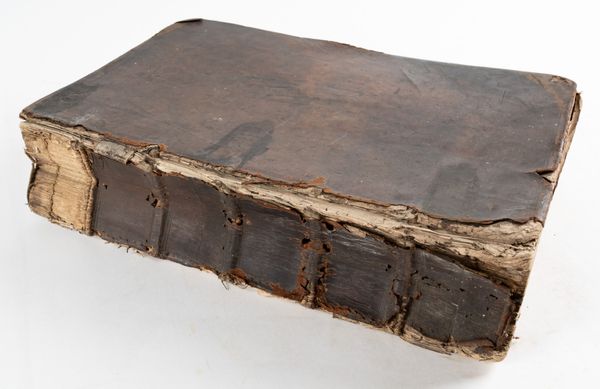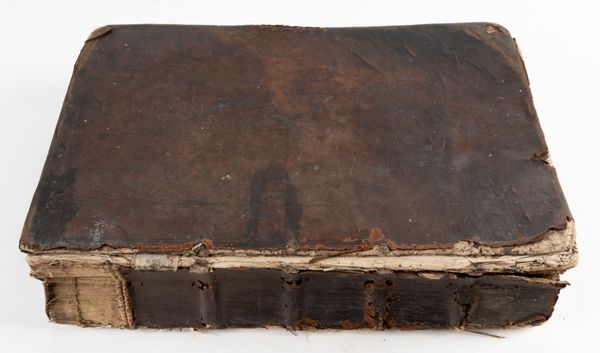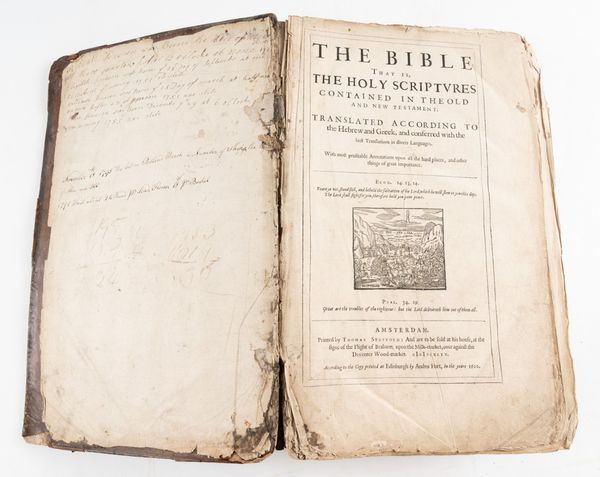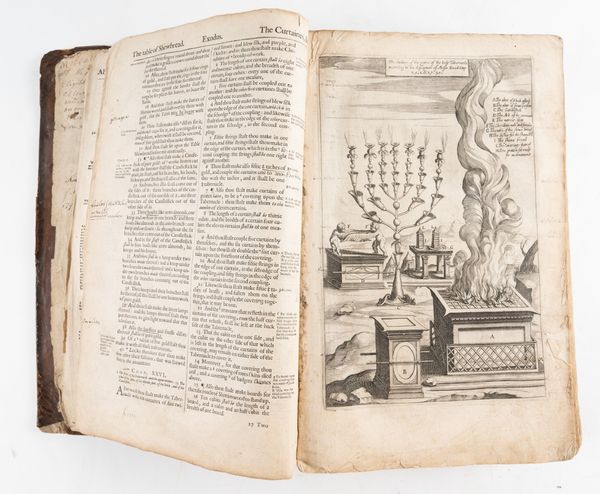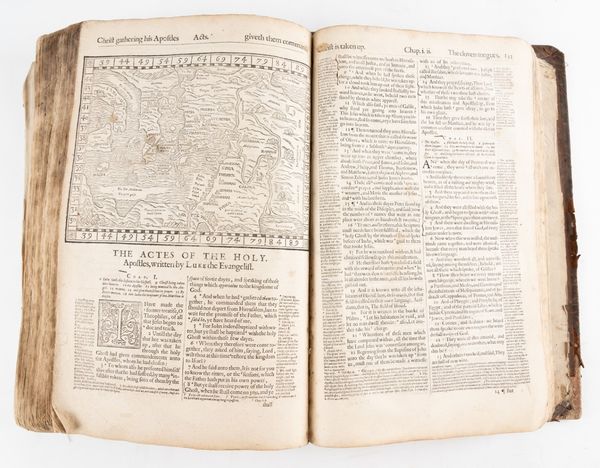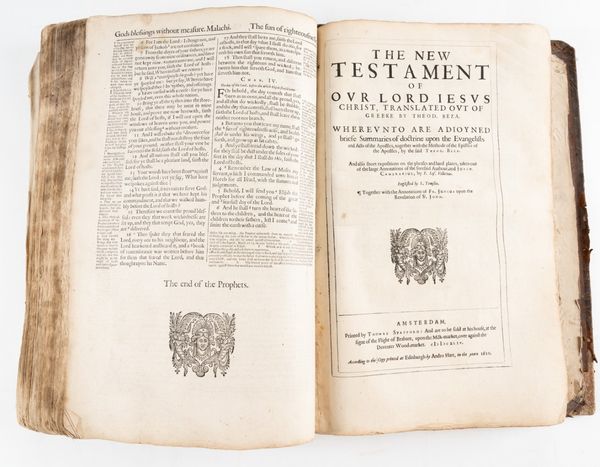BIBLE, in English - The Bible, Amsterdam, Thomas Stafford, 1644, folio, general title and title to the New Testament, woodcut maps and illustrations including 2 full-page, contemporary calf (worn). THE LAST EDITION OF THE GENEVA BIBLE.
| Estimate: | £400 - £600 |
BIBLE, in English - The Bible, that is, The Holy Scriptures contained in the Old and New Testament. Translated According to the Hebrew and Greek, and conferred with the best Translations in divers Languages. With most profitable Annotations upon all the hard places, and other things of great importance ... According to the Copy printed at Edinburgh by Andro Hart, in the yeare 1610. [New Testament title:] The New Testament of Our Lord Jesus Christ, Translated out of Greeke by Theod. Beza ... Englished by L. Tomson. Amsterdam: "Printed by Thomas Stafford: And are to be sold at his house, at the signe of the Flight of Brabant, upon the Milk-market, over against the Deventer Wood-market," 1644. 3 [separately paginated and signed] parts in one volume, folio (370 x 235mm). General title within double rule border and with woodcut illustration of the parting of the Red Sea, woodcut headpieces, initials and ornaments, foliated initials, roman type, 2 full-page engraved illustrations captioned "The deckins of the parts of the holy Tabernacle, according to the description of Moses" and "The patron of the high preist [sic] clade with the holie vestiments and ornaments according to the description of Moyses" respectively, title to the New Testament within double rule border, with woodcut ornament and dated 1644, 5 woodcut maps in the text, pages numbered on rectos only (lacks [?blank] before the general title, B3 and B4 detached, the first full-page engraved illustration torn without significant loss, the second with the lower fore-corner corner torn away resulting in loss of a few letters on the recto, Q3 torn without loss, several pages mis-numbered, a few leaves with staining and small holes at the gutter not affecting letters, [K1] in "Proverbes" torn without loss, corner of O3 in "Isaiah" torn away with loss of a few letters, Aa3 in "Jeremiah" torn with loss of a few letters, L1 in "Daniel" with a hole at the margin with loss of a few letters, some marginal wormtracks to the New Testament, G[1] in "Mark" torn with loss of a few letters, [R4] in "Acts" torn without loss, [Mm4] of "The second Table" [the final leaf] laid down on rear pastedown rendering the verso unreadable [?but blank], occasional light spotting, staining and browning, a few darker spots). Contemporary calf (rather worn, covers detached, spine torn with loss of upper segment, several holes in the spine, corners severely rubbed). Provenance: 17th-century marginal Dutch annotation throughout, mostly translating unusual words; 18th-century list of births relating to the Jeneson family on front pastedown; "November 18th 1795. Was lost on Portland Beach [i.e. Chesil Beach] a Number of Ships, the [?loss] of men was 500. 1795. Wheat sold at 24 Pound. Pr. load, Flower 18.S. pr. Bushel" (contemporary account of shipwrecks on front pastedown). THE LAST EDITION OF THE GENEVA BIBLE, sometimes referred to as "The Breeches Bible", with the "breeches" reading in Genesis iii, 7. Darlow and Moule 559; Herbert 579; Alan G. Thomas Great Books and Book Collectors (1975) pp.107-108; Wing B2206. "This version of the English Bible was made by English Protestants who, in Mary's reign, had taken refuge in Geneva where they found they could draw on 'the store of heavenly learning and judgement, which so abounds in this city.' More scholarly than any previous translation, it was largely the work of William Whittingham (1524?-79) afterwards Dean of Durham, Thomas Sampson (1517?-89) and Anthony Gilby (d. 1585) ... At least one hundred and forty editions were printed between 1560 and 1644 when, thirty-three years after the publication of the Authorised Version, the last Geneva Bible appeared ... A new feature was the use of roman rather than black letter type; the Geneva Version included prefaces, maps and tables: for the first time in an English Bible the verses were divided and numbered" (PMM 83, citing the first Geneva Bible of 1560). "It became the textus receptus for the puritan element in England. It was read by Shakespeare, Bunyan and the soldiers of the Civil War, and is thus of cardinal importance for its influence on the English language, literature and thought" (Alan G. Thomas Great Books and Book Collectors (1975) pp.107-108).
